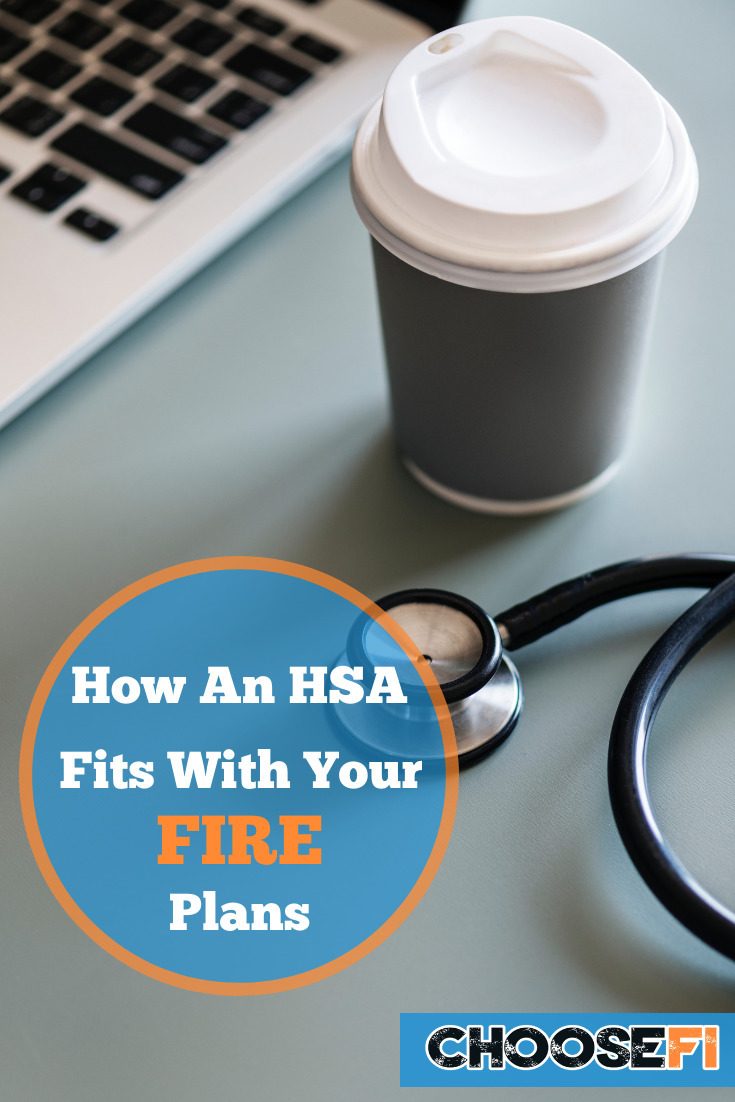When your primary financial goal is to retire early and become financially independent, sometimes it feels like you can only do so much. If you’re already maxing out your IRA and 401(k) every year, you might assume that you are left with only taxable accounts to invest your cash in. So let’s see how an HSA fits with your FIRE plans.
Thankfully, the HSA is a perfect third option for investing in your future. It may sound like a primary savings account for medical expenses, but it’s a great investment vehicle with many tax benefits. For anyone living the FI lifestyle, it’s a match made in heaven.
If you’re interested in how an HSA can help you achieve financial independence, read ahead to learn more.
The Rules of HSAs
Triple Tax Advantage
A Health Savings Account (HSA) is the holy grail of financial independence. It comes with a handful of impressive tax benefits. You don’t pay taxes on your contributions, you don’t pay taxes when you withdraw funds, and you don’t pay taxes on your HSA earnings. Experts refer to this as the “triple tax advantage.”
Related: Choosing Your Health Insurance: A Guide For Open Enrollment
Contribution Limits
Currently, HSAs have a maximum contribution limit of $3,550 a year for individuals and $7,100 a year for families. Seniors 55 and older can put away an extra $1,000 a year. Typically, those contribution limits will increase every year to keep up with the pace of inflation.
Unlike an FSA, HSAs have no rule on when you have to spend the money. You can contribute the funds now and use them at any point in the future, with any money left over at the end of a year rolling over into the next.
Eligibility
To be eligible for an HSA, you need to be enrolled in a high-deductible insurance plan. Your plan must have a deductible of at least $1,400 for individuals and $2,800 for families, and your out-of-pocket expenses must be no more than $6,900 for individuals and $13,800 for families.
When choosing a plan during open enrollment, remember that not all high-deductible plans are HSA-eligible. Eligible plans will have the “HSA” designation listed in the description.
You can only use HSA funds on qualified medical expenses, which include the following:
- Diagnostic screenings, such as mammograms, MRIs, and CT scans
- Prescription glasses, contacts, and vision-corrective surgery
- Mental health care
- Surgery, excluding cosmetic or elective surgery
- Labor and delivery
- Transportation to and from doctor’s appointments
- Acupuncture
- Dental services
Not all medical expenses qualify for HSA disbursal. For example, if you buy Tylenol at the drugstore, you can’t use your HSA funds unless your doctor specifically wrote you a prescription for Tylenol. Therapy is covered under an HSA, but not marriage counseling. In short, you should always double-check before assuming an expense is qualified.
You can find a full list of HSA qualified medical expenses here. If you need something that falls outside of the list, call your HSA provider and ask. It’s always best to have a doctor’s note verifying the treatment, product, or service.
Lively: A Modern HSA
Many employers offer partnerships with HSA firms where they’ll let you make payroll-deducted contributions to an HSA. However, many of the employer-partnered HSA firms charge the individual HSA owners monthly or annual fees.
Lively is an innovative HSA company that will let you open an HSA with no monthly or annual service fees for individuals and no minimum balance requirement. Here’s how it works.
You start by visiting the Lively website and opening your personal HSA. After you do that, you can set up transfers via employer-deducted payroll contributions. Or you can make individual or automatic contributions via your bank account.
The money you put in your Lively HSA sits in an FDIC-insured account that earns interest. However, you can also choose to invest your HSA funds as well.
Lively partners with TD Ameritrade to allow you to manage and invest your HSA funds in an online capacity. TD Ameritrade has zero fees for many online trades, so there’s a good chance you can avoid fees there as well. And you decide how much of your HSA funds you want to invest. There’s no minimum balance for investing with TD Ameritrade either.
You can get up to three free debit cards for your Lively HSA account too. Then you can use those debit cards to pay at your doctor’s office, pharmacy, or anywhere else. And you can transfer HSA funds from other accounts to Lively.
Lively works on a paperless basis, so you can manage your account entirely online.
Listen: The Triple Tax Savings Of The Health Savings Account
Using An HSA For FIRE
You can use an HSA for any qualified medical expense at any point in your life. The funds in an HSA remain yours, even if you’re no longer eligible for an HSA because you’ve switched to a different type of insurance plan.
HSAs Grow Like Other Investments
HSAs that are invested in ETFs or mutual funds grow like other retirement accounts. The longer the money sits there, the more interest it will accumulate over time, so it’s best to wait as long as possible to reimburse yourself for any medical expenses you incur now.
“The longer you can defer taking money out of it and let the HSA investments grow, the greater the benefit,” said financial planner Brian Canning, CFP® of Abacus Wealth. “I tend to encourage clients to at least wait until Medicare age.”
Here’s an example. You’re 25-years-old and decide to open an HSA and start contributing the individual max of $3,550 a year. You immediately start investing the money in funds that return seven percent a year on average. You do so for 40 years until you’re eligible for Medicare. By now, your HSA has grown to $761,864. In reality, that total could end up being much higher due to annual contribution limits increasing to keep up with inflation.
Once you’re 65 and older, you can use the money in an HSA for Medicare premiums. You can also withdraw the funds for anything without paying the 20 percent penalty, though you’ll still pay income tax.
Related: Investing Inside Your HSA: Healthcare’s Best Kept Secret
Avoid Income Tax
To avoid paying income tax on HSA distributions, you can also choose to reimburse yourself for past medical expenses that you paid out of pocket. An HSA can pay for any qualified medical cost, which excludes regular insurance premiums, elective procedures, cosmetic surgery, and over-the-counter drugs purchased without a prescription.
“It’s important to keep careful records and receipts so you can reimburse yourself for these expenses in retirement,” said financial planner Ryan Inman of the Financial Residency Podcast.
Scan all receipts and store them in a secure online folder. Write up a spreadsheet detailing all the bills you’ve paid out of pocket and include as much information as possible. You want a clear record in case the IRS ever decides to investigate your claims.
You Can Take Out Withdrawals Anytime
An HSA is great for the FIRE lifestyle because you can take out withdrawals anytime. If you’re an early retiree and want to withdraw money from your IRA or 401(k), you’ll pay a 10 percent federal tax penalty. Your state may also charge you a separate penalty.
Related: How To Use Your HSA To Provide Income In Retirement
Bottom Line
To avoid paying any kind of unnecessary penalty or tax, try this method: Pay for all your medical expenses out of pocket without dipping into your HSA. Contribute as much as you can to your HSA account, up to the annual limit. Once you retire, start distributing money from your HSA while claiming past expenses on your taxes. After you turn 59.5, you can start withdrawing money from your IRA or 401(k) without any kind of penalty.
Related Articles
- Get Free Health Insurance Quotes Through Policygenius
- Planning For Healthcare In Early Retirement
- The Triple Tax Benefits Of The HSA




